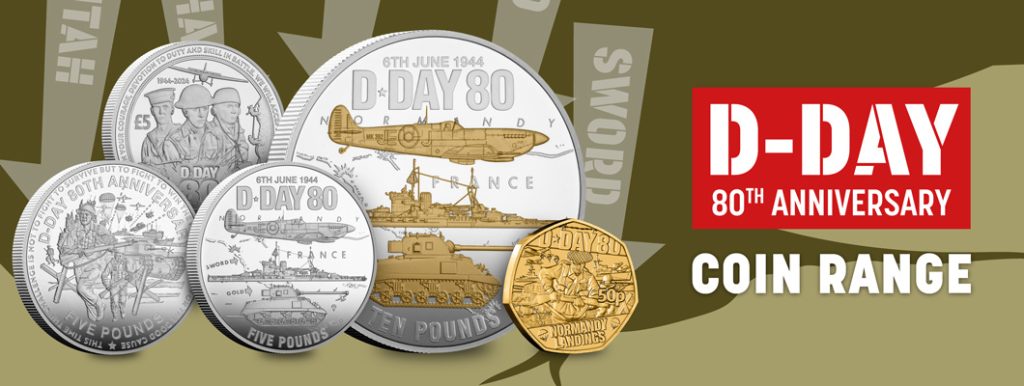Posts Tagged ‘WWII’
HMS Warspite: The First Battleship to Open Fire on D-Day
Click here to view the brand new 80th anniversary of D-Day coin range featured in this video.
As the dawn of June 6, 1944, broke over the Normandy coast, a monumental chapter in world history was being written. D-Day, the largest seaborne invasion in history, was about to commence. Included among the vast Allied fleet assembled for Operation Overlord, the HMS Warspite, an experienced British battleship. It was on this historic day that the Warspite became the first battleship to open fire, marking the beginning of a crucial chapter in the liberation of Europe.
The Pride of the Royal Navy: HMS Warspite
HMS Warspite, a Queen Elizabeth-class battleship, was launched in 1913, she had already earned her place in naval legend through her service in both World Wars. By the time of D-Day, Warspite had been in service for over three decades, witnessing the evolution of naval warfare from the dreadnought era to the age of aircraft carriers and submarines.
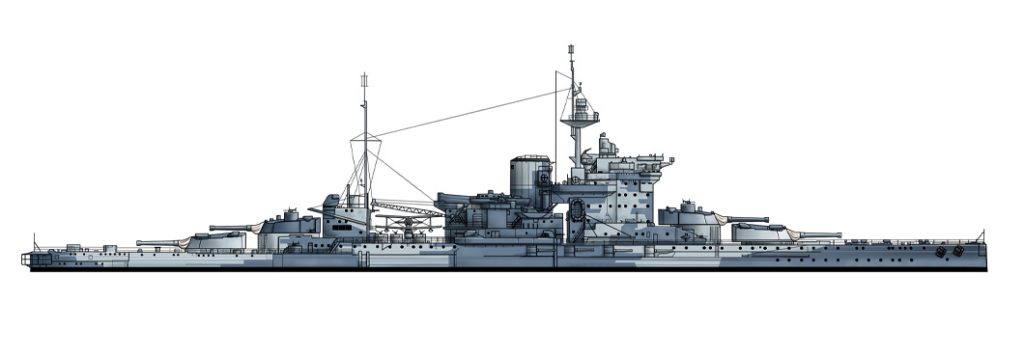
Warspite’s Role on D-Day
As part of the bombardment force during the Normandy invasion, Warspite had a crucial role. She was tasked with softening the German defenses along the coast to aid the landing of Allied troops on the beaches. Positioned off Sword Beach, one of the five designated landing areas, Warspite’s guns were ideally situated to provide critical support.
The First Shot
In the early hours of June 6, Warspite made history as the first battleship to open fire against German fortifications. This act signified more than just a military manoeuvre; it was a symbol of the Allied determination to reclaim Europe from the clutches of Nazi occupation.
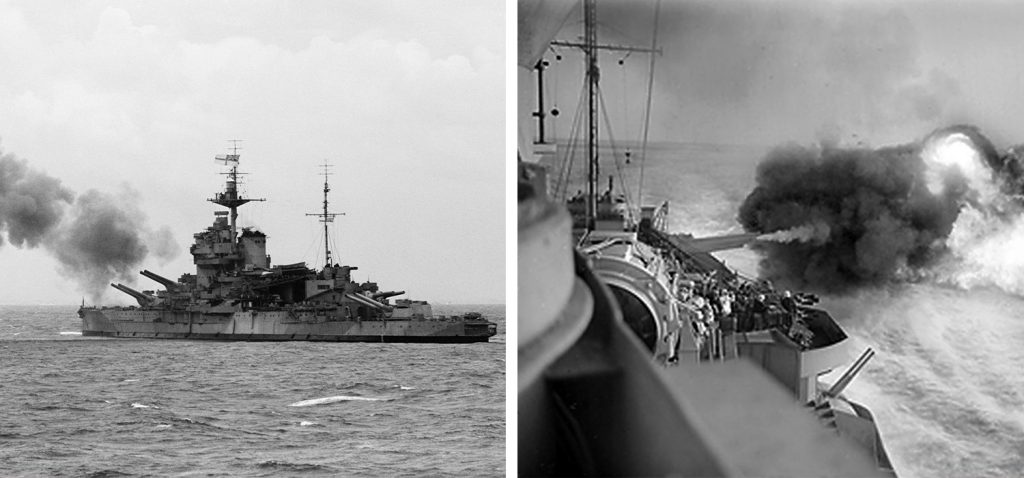
Precision Bombardment
Equipped with eight 15-inch guns, Warspite was a formidable force. Her firepower was not just about brute force; it was precise. Warspite’s gunnery crew, seasoned by years of conflict, were experts at long-range bombardment. Their accuracy was critical in minimising collateral damage and ensuring the success of the landings. Despite being one of the oldest battleships in service, Warspite proved that she was still a force to be reckoned with.
Click here to view the other key elements featured on the D-Day 80th Anniversary coin design.
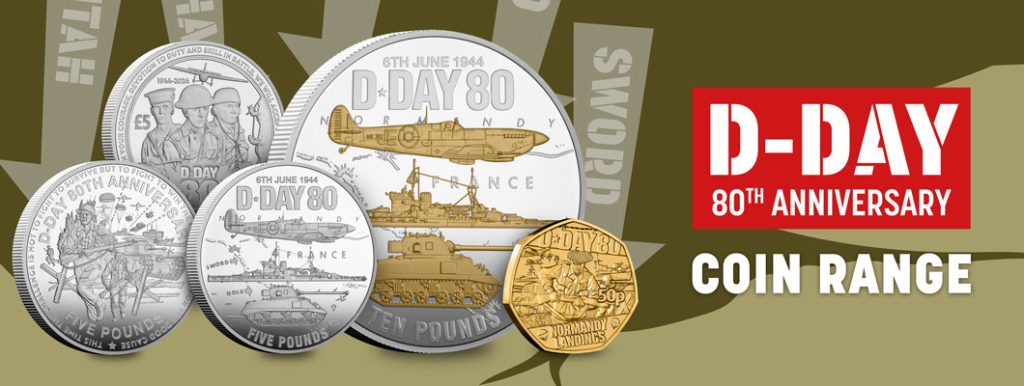
We strive for historical accuracy in our content. If you notice any inaccuracies, please let us know. Your feedback will help us maintain and improve the integrity and accuracy of our information.
The Sherman Firefly Tank: Unleashing Fury on D-Day and Beyond
Click here to view the brand new 80th anniversary of D-Day coin range featured in this video.
From the hedgerows of Normandy, France, to the hills of Italy, the Sherman Firefly stood out among Allied tanks as a fearsome adversary for the German forces during World War II. This modified version of the Sherman Tank played a crucial role in the historic D-Day invasion and beyond.
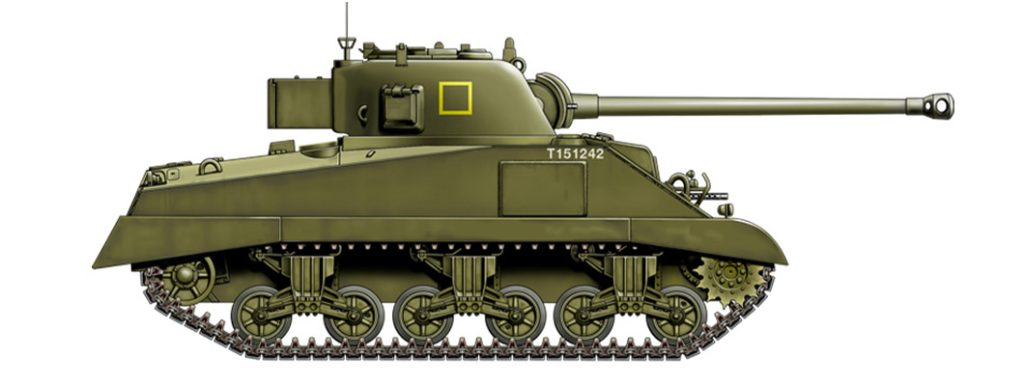
The Challenge:
The original M4 Sherman tank faced limitations with its basic 75 mm gun against formidable German tanks like the Panther and Tiger. The solution came in the form of the 17 Pounder, a powerful British gun capable of taking down any known German armour at the time. The challenge was to integrate this formidable weapon onto the Sherman Tank. Despite initial opposition from the Ministry of Supply, by October-November 1943, the concept gained momentum, receiving the highest priority from Winston Churchill in preparation for D-Day.
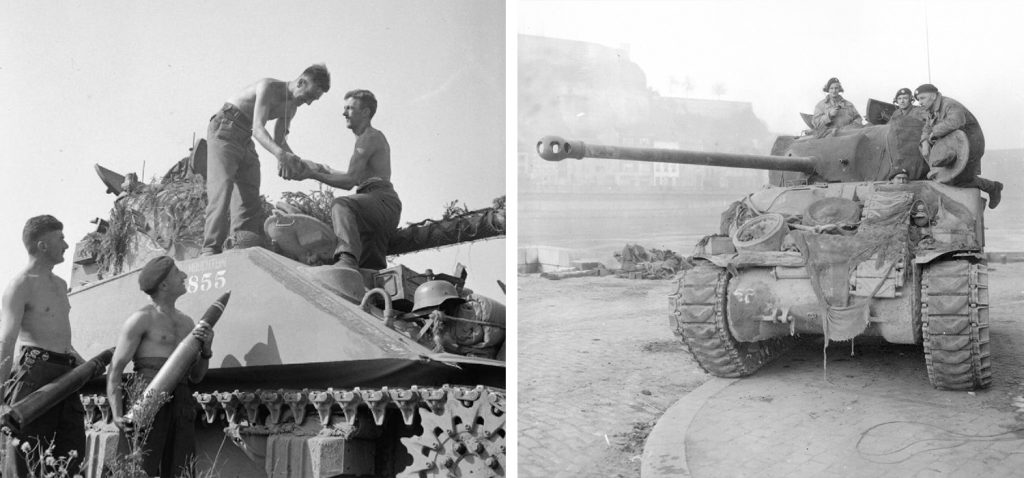
D-Day Deployment:
As the crucial day approached, the Sherman Firefly became a secret weapon in the Allied arsenal. Deployed just in time for D-Day, it filled the ranks of the 21st Army Group’s Armoured Brigades. Allied intelligence had not anticipated the presence of formidable German tanks, making the Sherman Firefly a critical asset in facing unexpected threats.
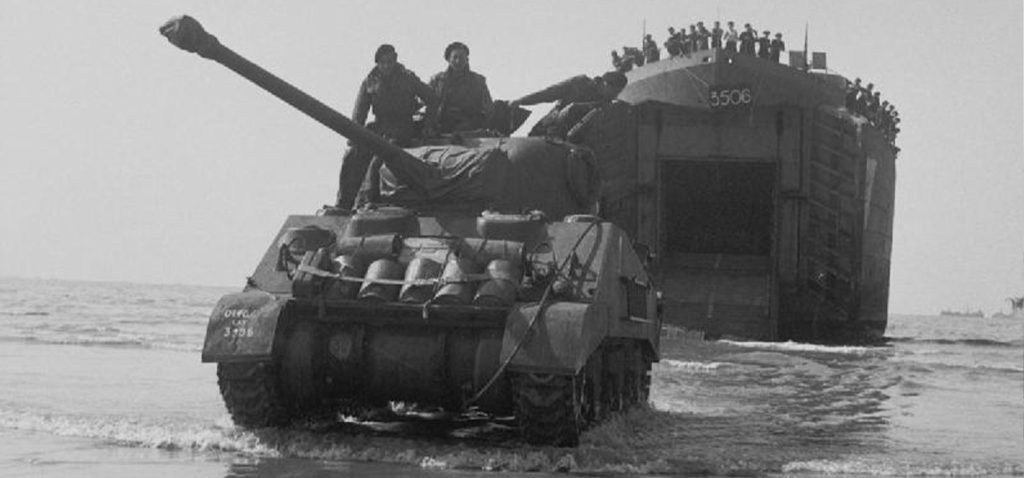
On the Battlefield:
The Sherman Firefly quickly gained a reputation as a game-changer. In the chaos of D-Day, the Sherman Firefly’s firepower proved decisive in repelling German attacks and securing vital beachheads.
The Sherman Firefly’s effectiveness became legendary, with notable instances like Lt. G. K. Henry’s five Panthers knocked out in rapid succession with only six rounds. Even the feared German tank ace Michael Wittman is believed to have fallen to a Canadian Sherman Firefly.
Legacy:
Over 1,900 Sherman Fireflies served in various Allied divisions, making significant contributions in Normandy, Italy, and beyond. Post-war, Sherman Fireflies found new homes in countries like Italy, Lebanon, Argentina, Belgium, and the Netherlands.
Click here to view the other key elements featured on the D-Day 80th Anniversary coin design.
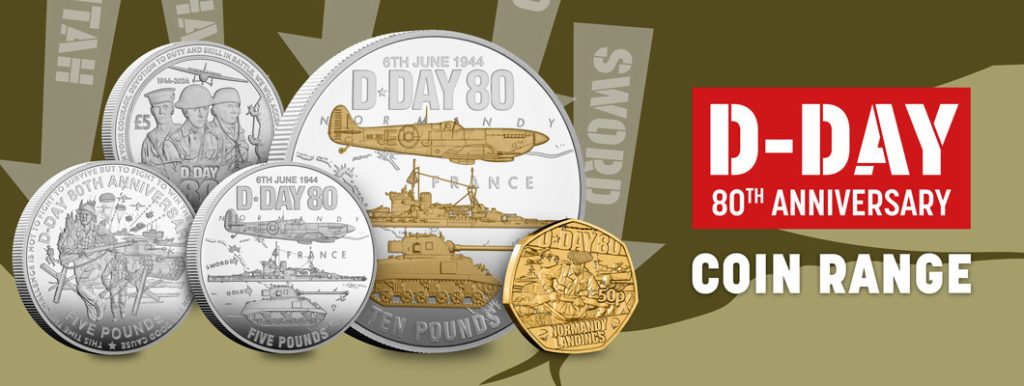
We strive for historical accuracy in our content. If you notice any inaccuracies, please let us know. Your feedback will help us maintain and improve the integrity and accuracy of our information.
D-Day: The Epic Turning Point in World History
This year marks the 80th anniversary of D-Day, a pivotal event on June 6, 1944, that significantly altered the course of World War II and influenced the fate of nations.
D-Day, also known as Operation Overlord, was an immense Allied invasion executed by Land, Sea, and Air. The mission: secure a stable position in Western Europe, paving the way for the liberation of nations oppressed by Adolf Hitler’s Third Reich.
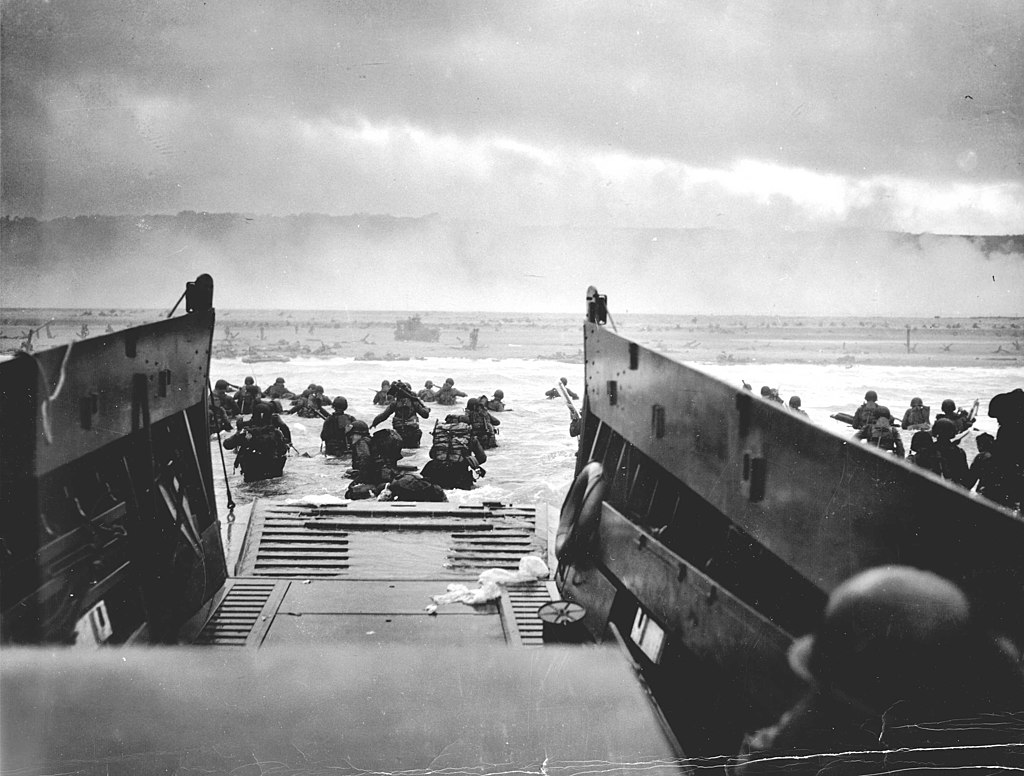
A crucial element of D-Day involved the simultaneous landing of Allied forces on five Normandy beachheads: Utah, Omaha, Gold, Juno, and Sword. This coordinated effort stands as the largest amphibious assault in the history of warfare.
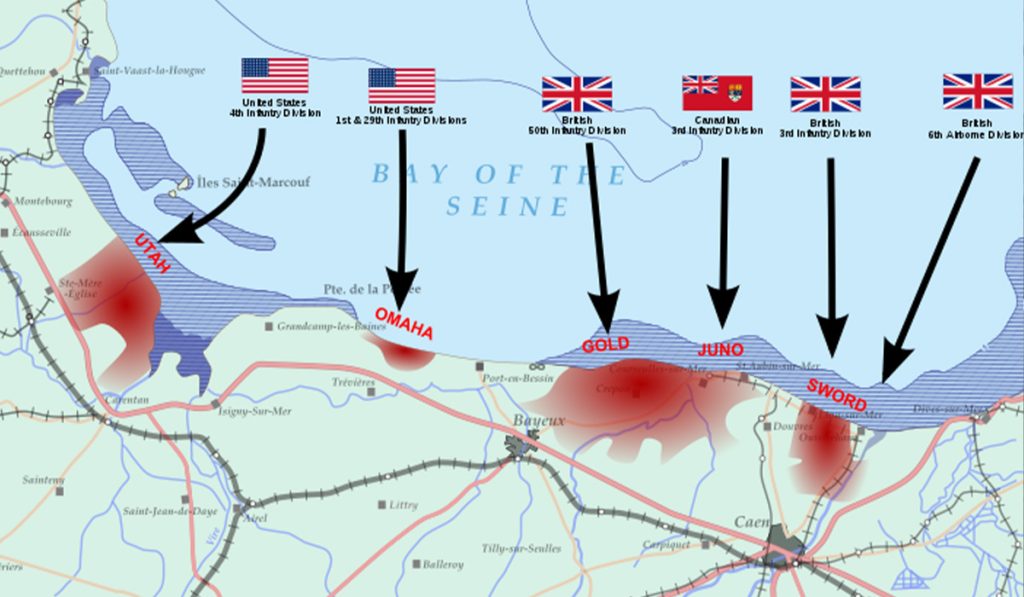
More than 156,000 Allied troops from Great Britain, the USA, Canada, and other nations participated in this invasion. These brave individuals worked together meticulously to establish a secure foothold in Western Europe.
Operation Overlord featured an extensive naval armada with over 5,000 vessels and air support from more than 11,000 aircraft. This combined effort was essential for the success of the landings.
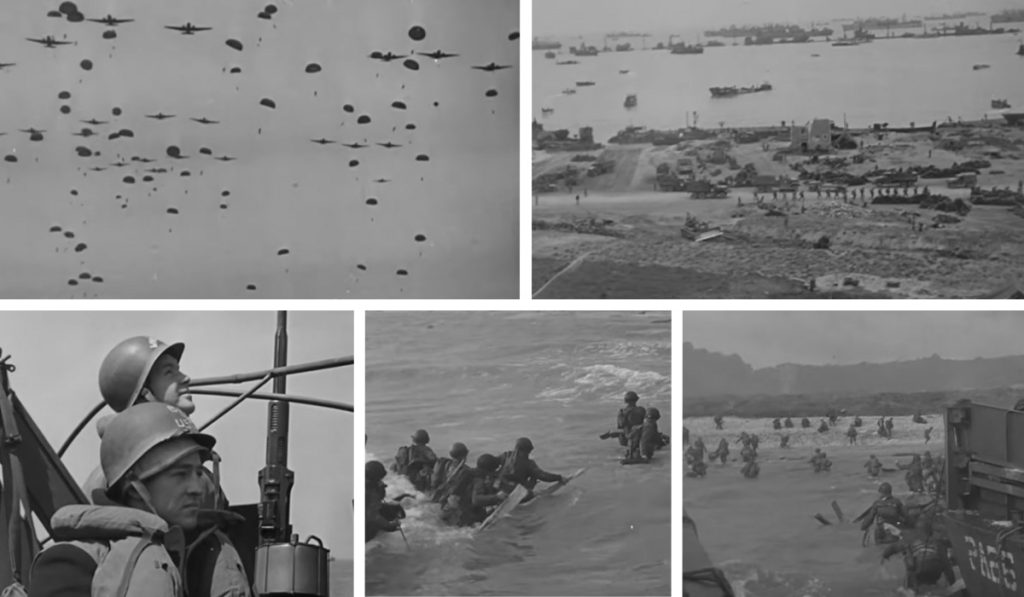
In the lead-up to the beach landings, thousands of paratroopers were airdropped behind enemy lines to disrupt German defenses and secure strategic objectives, adding an extra layer of complexity to the plan.
The invasion force brought an unprecedented amount of firepower, including tanks, artillery, and well-equipped infantry. The objective was clear: to overwhelm German defenders and establish a secure beachhead.
However, the human cost of D-Day was immense. On that single day, thousands of Allied soldiers lost their lives, and many more were wounded. The beaches of Normandy hold a sacred place in history, symbolising the price paid for the pursuit of freedom.
To commemorate the 80th anniversary of D-day, a brand new range of commemorative coins have been issued. Take a look at the brand new designs and shop the whole range via the link below.
The 80th Anniversary of D-day commemorative coin range.
